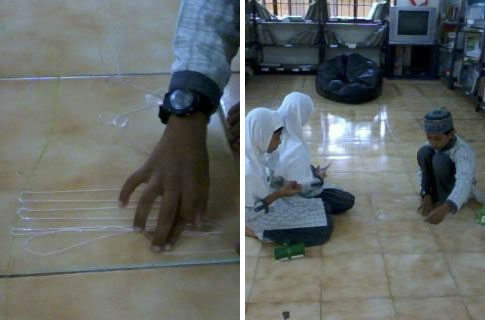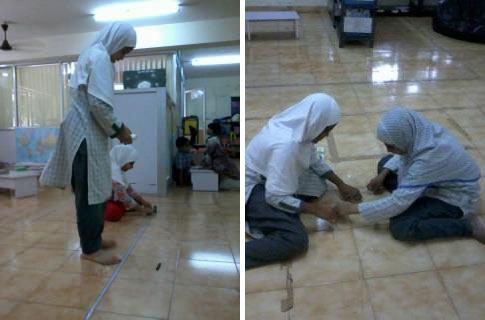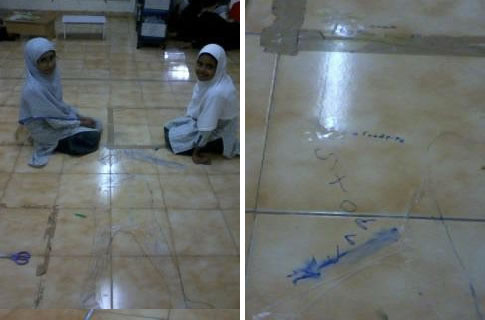
Recap of “Food in our bodies”
We are using the 4th grade book for 5th grade because I wanted to finish all the chapters. We didn’t manage to finish last year since we started late. We will start the 5th grade book in about a month if all goes well.
We are doing the “Food in our bodies” chapter now. Some of our experiences.
Part One
Very cool experiment in the 5th Grade science lesson today. The 5th graders are learning about digestion and how the process starts in the mouth itself.
First they broke up into the “Rice” & “Roti” teams. One team kids chewed roti and the other rice for about 2 minutes. They had to observe the change in taste. Then they tested different foods for starch using iodine. So they found that banana, bread and biscuit were loaded, but tomato, butter and milk didn’t have any.
The next experiment was so cool! We grated a potato and added water to it. We mixed it well and poured out some of the water. We tested it for starch and found the presence – the water turned blue. Then I volunteered to be the guinea pig – I took a mouthful of the potato water and swirled it in my mouth for a full 5 minutes! That was hard! Finally spat it out into a cup and added iodine. Voila – the mixture was orange. NO BLUE! The kids had to work out where the starch went… Isn’t
that the coolest way to teach the breakdown of starch in the mouth?
All thanks to the super cool Homi Bhabha Centre for Science Education Small Science curriculum!!!
Part Two
Today’s science lesson was super too!
Continuing the lessons on digestion, the kids modeled the food pipe, stomach and intestine. Not in the “regular” way you would think – plastic or thermocole models. Those are just boring stuff!
Here is what they did..
First they folded a plastic bag into a tube shape. Each held it with one hand and I inserted a cut banana from the top. The kids had to use their hands to squeeze the banana down this “food pipe”. The banana mush landed up in another plastic bag, the stomach. The bag was tied and the kids crushed and mushed it in their hands. Then this banana mash along with some liquid was poured into a permeable cloth bag – the intestine. This too was squeezed and squeezed and the kids saw the mush-mash pouring out of the holes in the bag. Thats how the goodies in our food pour into the blood stream! The remaining matter was you-know-what – waiting to go into the big intestine.
The kids had loads of questions after a burst of giggles –
“How does vomit come?”
“What is gas?”,
“How come our stomach doesn’t hurt when it contracts so much when digesting food?”,
“Where does a hiccup come from?”
“What makes the vomit smell?”
Scientific questions – without embarrassment or shyness! Thats the way a scientist works right?
Part Three
The kids learned how the length of the human digestive system – about 7 metres, all fits beautifully into our torso.

They first measured out 7 metres of string – using measuring tape.

Then they sketched one of their team member’s body outline on the floor.
There was a lot of learning in the measuring of the string itself – the concepts of inch vs cm/metre on a scale was clarified. Then as one kid said “That’s how small my whole body is?” Fitting the entire length of the string took a lot of time – measuring, taping, colouring etc.

Kudos to Homi Bhabha Centre for Science Education for another super lesson plan! Really can’t find a better science curriculum. Wish more schools would adopt it.



